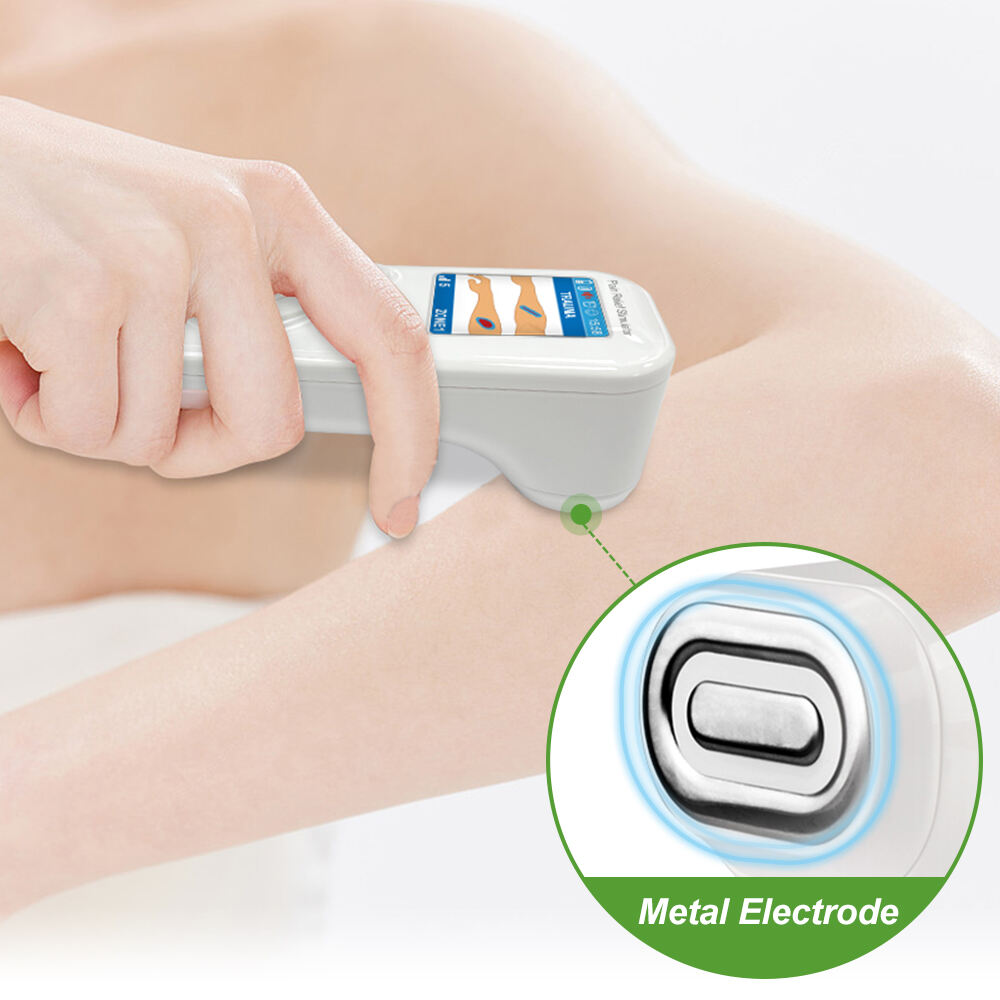If you're struggling with persistent neck and shoulder pain, stubborn lower back discomfort, or recovering from a sports injury, you've likely heard about muscle stimulators. These small devices with electrode pads promise pain relief and faster recovery without medication. But do they really work? Or are they just expensive placebos?
The answer is: When used correctly, muscle stimulators can be an extremely valuable tool in managing chronic muscle pain and injury rehabilitation. The key lies in understanding how they work, which type is suitable for your condition, and how to use them safely and effectively.
This article will explore the science behind muscle stimulators, analyze the unique roles of different devices (like TENS and EMS) in pain management and rehabilitation, and provide you with evidence-based guidance to determine if they're right for your recovery plan.
Part 1: Understanding Core Technologies - The Fundamental Difference Between TENS and EMS
First, we must clarify a common confusion: not all muscle stimulators are the same. They mainly fall into two categories with distinctly different purposes.
1. TENS (Transcutaneous Electrical Nerve Stimulation): Designed for Pain Management
Primary Goal: Block pain signals, not exercise muscles.
-
How It Works:
Gate Control Theory: Your nervous system is like a highway, and pain signals are cars traveling on it. TENS devices produce a gentle, high-frequency tingling sensation. This harmless signal "travels faster" than the pain signal, thereby "clogging" the pain pathway and preventing it from reaching the brain. What you feel is the tingling, not the pain.
Endorphin Release: Certain TENS modes can stimulate the body to release endorphins, the body's natural painkillers, which raise the pain threshold.
Sensation: A noticeable buzzing or tingling feeling, typically without strong muscle contractions.
Primary Applications: Chronic pain (e.g., arthritis, fibromyalgia, lower back pain), acute pain (e.g., after a sprain).
2. EMS (Electrical Muscle Stimulation): Designed for Muscle Rehabilitation
Primary Goal: Induce muscle contractions to improve muscle function.
How It Works: Bypasses the brain by sending electrical signals directly to the motor nerves, commanding muscle fibers to undergo passive, rhythmic contractions and relaxations.
Sensation: Visible muscle twitching or strong contractions, sometimes accompanied by a feeling of muscle fatigue.
Primary Applications: Muscle re-education (relearning to activate muscles post-surgery), preventing or slowing muscle atrophy (due to immobilization or bed rest), improving blood circulation, relieving muscle spasms.
Important Note: Many modern devices are TENS/EMS combination units, allowing you to switch modes as needed.
Part 2: How Can Muscle Stimulators Help Relieve Chronic Muscle Pain?
For chronic muscle pain, TENS is the primary tool.
Scientific Evidence and Efficacy
Numerous studies and clinical practices have confirmed the effectiveness of TENS for various chronic pain conditions:
Lower Back Pain: Multiple systematic reviews note that TENS can be an effective supplement to conventional treatment, significantly reducing pain intensity.
Osteoarthritis: For conditions like knee arthritis, TENS can effectively relieve pain during activity and at rest, improving joint function.
Fibromyalgia: Although the mechanism is complex, many patients report reduced pain and fatigue after using TENS.
Myofascial Pain Syndrome: TENS applied to trigger point areas can help break the pain-spasm-pain cycle.
Why Does It Work? – Breaking the Vicious Cycle of Pain
Chronic muscle pain often falls into a self-reinforcing cycle:
Pain → Protective muscle spasm and tension → Reduced local blood circulation, buildup of metabolic waste → More pain and stiffness
TENS breaks this cycle by:
Directly Blocking Pain: Provides immediate (though often temporary) relief via the gate control mechanism.
Reducing Muscle Guarding: As pain decreases, overly tense muscles can relax, alleviating spasms.
Improving the Local Microenvironment: Although less direct than EMS, nerve stimulation itself can promote local blood circulation to some extent.
Part 3: The Key Role of Muscle Stimulators in Injury Rehabilitation
In the field of rehabilitation, EMS/NMES (Neuromuscular Electrical Stimulation) shines. Physical therapists often incorporate it into rehab plans for the following reasons:
1. Combating Muscle Atrophy – "Insurance" During Recovery
When you need to immobilize a limb due to an ankle sprain, torn ligament, or post-surgery, muscles can atrophy quickly due to "use it or lose it." EMS can, when you cannot move actively:
Provide Passive Exercise: Mimics voluntary contractions, sending the "stay strong" signal to muscles, significantly slowing the loss of muscle mass and strength.
Prepare for Return to Activity: Maintaining muscle condition means you can resume normal activities and strength training faster once immobilization ends.
2. Muscle Re-education – Reconnecting the "Brain-Muscle" Link
After surgery or prolonged pain, you might find it difficult to voluntarily contract or activate a specific muscle (e.g., unable to effectively contract the gluteus medius after hip surgery). EMS can:
Provide Biofeedback: When you attempt to contract the muscle, the device simultaneously provides electrical stimulation, helping you "feel" how the correct muscle should work.
Strengthen Neural Pathways: Repeated stimulation helps re-establish and strengthen the motor command pathways from the brain to the muscle.
3. Improving Blood Flow and Reducing Swelling
Rhythmic muscle contraction and relaxation acts like a "pump," able to:
Promote Venous and Lymphatic Return: Helps remove metabolic waste and excess tissue fluid from the injured area, thereby reducing swelling and delivering more oxygen and nutrients for tissue repair.
Accelerate the Recovery Process: This is particularly crucial for reducing swelling after surgery or acute strains.
Part 4: Important Reminders, Contraindications, and Best Practices
Muscle stimulators are not a panacea and are not safe for everyone.
When Should You Avoid Using Them? (Contraindications)
Absolutely avoid use if you have:
A cardiac pacemaker or other implanted electronic device.
Epilepsy (specific types of current might induce seizures).
Deep Vein Thrombosis (DVT) (muscle contraction could dislodge a clot).
Malignant tumors in the area of application.
Pregnancy (especially avoid using on the abdomen and lower back).
Use only under medical guidance if you have:
Diminished skin sensation or broken skin in the area.
Severe heart disease.
Bleeding disorders.
How to Maximize Effectiveness? – An Integrated, Synergistic Approach
The most critical point is: Muscle stimulators should be part of a comprehensive rehabilitation plan, not the sole solution.
TENS is Not a Cure: It is good at managing symptoms but often doesn't address the root cause of pain (e.g., poor posture, muscle imbalances, structural issues). It should be used in conjunction with physical therapy, stretching, and strength training.
EMS is Not a Substitute for Active Exercise: It is a bridge for when you cannot or should not move actively. Ultimate recovery must be achieved through active, functional training.
-
Consult a Professional: It is highly recommended to consult a physical therapist or doctor before initial use. They can:
Provide an accurate diagnosis.
Guide you in choosing the correct device type and settings.
Teach you the correct electrode placement.
Integrate it into a personalized treatment plan.
Conclusion: Use Wisely, Make It a Powerful Assistant in Your Recovery
Returning to the initial question: Can muscle stimulators help with chronic muscle pain or injury rehabilitation?
The answer is yes. When you understand the different roles of TENS and EMS and use them as directed, as part of a broader, active rehabilitation strategy, they can:
Provide a valuable window of pain relief, allowing you to perform necessary therapeutic exercises more comfortably.
Protect your muscles during vulnerable periods, laying a solid foundation for full recovery.
Empower you with a sense of control, enabling you to play a more active role in managing your own health.
Investing in your health starts with investing in knowledge. Now you have the information needed to make an informed decision.





